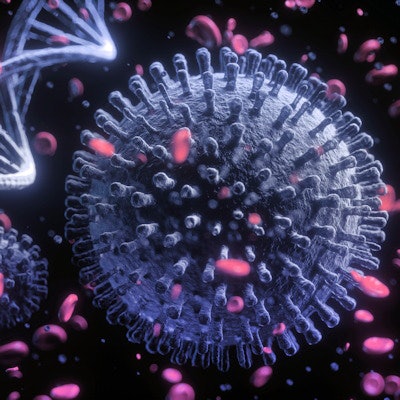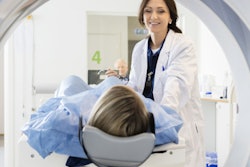
Lack of guidance for how best to use CT with COVID-19 has led to significant variations in standard measurements of CT radiation dose, according to a study published November 10 in Radiology.
The findings highlight the need to standardize CT protocols in order to protect patients from unnecessary radiation, wrote a team led by Dr. Fatemeh Homayounieh of Massachusetts General Hospital in Boston.
"[Our study identifies] an urgent need for a dedicated task force to establish specific guidelines and recommendations on the frequency of CT and specific scan protocols [for COVID-19] to minimize the effects of cumulative radiation exposure from multiple CT or multiphase CT protocols," the group wrote.
Guidance is lacking for specific CT protocols for imaging patients with COVID-19, the group noted. To assess how CT has been used in the pandemic, Homayounieh and colleagues used data from an International Atomic Energy Agency (IAEA) survey conducted between May and July that assessed use, protocols, and radiation doses of CT exams performed for COVID-19. The survey included 782 patients from 54 healthcare sites in 28 countries across four continents (Africa, Asia, Europe, Latin America).
The survey sought information about the prevalence of CT exams; indications for CT and protocols for its use for COVID-19; patient information such as age, weight, and clinical indication; description of CT equipment (make and model, year of installation, number of detector rows); scan protocols (body region, scan phases, tube current and potential); and radiation dose descriptors -- CT dose index (CTDIvol) and median dose length product (DLP).
The team found that less than half of healthcare sites used CT for initial diagnosis of COVID-19, but three-quarters used it for assessing disease severity. Of the 782 patients, 71% had only one CT exam.
CT dose index ranged across a variety of factors.
| Factors influencing CT dose index range for CT exams used for COVID-19 | |
| Factor | CT dose index range |
| Vendor | 7 mGy to 11 mGy |
| Number of detector rows | 8 mGy to 9 mGy |
| Year of device installation | 7 mGy to 10 mGy |
| Reconstruction techniques | 7 mGy to 10 mGy |
The team found eight-fold variations in median CTDIvol and 10-fold variations in median DLP across multiple healthcare sites from one country. Additionally, some continents showed wide ranges: For example, cumulative DLPs for Latin American patients was 503 mGy, compared with a range of 306 mGy to 382 mGy for the other three continents.
The wide range of radiation dose from CT used for COVID-19 disease is of concern, wrote Choonsik Lee, PhD, of the U.S. National Cancer Institute in an accompanying editorial.
"Considerable variations in scan protocols are observed in healthcare sites worldwide, and the current level of radiation dose is much greater than that of the proposed low-dose CT scan protocols," he wrote. "It will be crucial for future studies on CT dose during COVID-19 follow-up to ... [more accurately estimate dose] ... and to assess the risks and benefits of follow-up CT scans in the context of COVID-19."




















